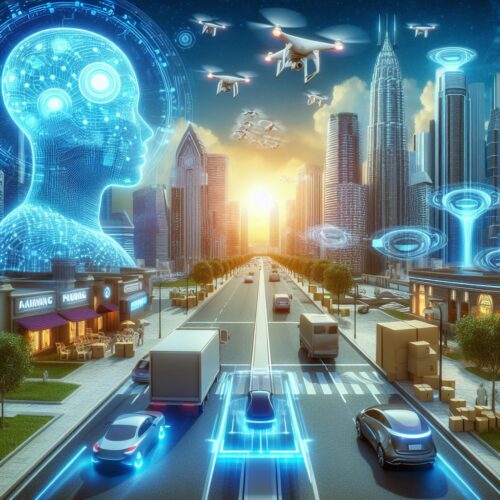Understanding AI: Exploring Its Present and Future
In today’s rapidly evolving technological landscape, one term seems to be on everyone’s lips: Artificial Intelligence (AI). From smartphones to self-driving cars, AI is powering innovations that are reshaping the way we live, work, and interact with the world around us. But what exactly is AI, and what does its future hold? Let’s delve into this fascinating topic.
Defining AI
At its core, AI refers to the simulation of human intelligence in machines. This encompasses a wide range of capabilities, including learning, reasoning, problem-solving, perception, and even creativity. AI systems are designed to analyze vast amounts of data, recognize patterns, and make decisions with minimal human intervention.
Types of AI
AI can be classified into two main categories: narrow AI and general AI.
- Narrow AI: Also known as weak AI, narrow AI is designed to perform specific tasks or functions. Examples include virtual assistants like Siri and Alexa, recommendation systems on streaming platforms, and facial recognition technology.
- General AI: Often referred to as strong AI or artificial general intelligence (AGI), this is a hypothetical AI system that possesses the ability to understand, learn, and apply knowledge across a wide range of tasks—much like a human. General AI remains a subject of ongoing research and is yet to be achieved.
The Current State of AI
In recent years, we’ve witnessed remarkable advancements in AI technology. Machine learning, a subset of AI that involves training algorithms to learn from data, has become particularly influential. Techniques such as deep learning have enabled breakthroughs in areas like natural language processing, computer vision, and robotics.
AI is already being used across various industries, including healthcare, finance, manufacturing, and transportation, to enhance efficiency, productivity, and decision-making. From personalized medicine and fraud detection to autonomous vehicles and predictive maintenance, the applications of AI are diverse and far-reaching.
The Future of AI
Looking ahead, the potential of AI seems boundless. Here are some key trends and developments shaping its future:
- Ethical AI: As AI becomes more pervasive, ethical considerations surrounding its use become increasingly important. Issues such as algorithmic bias, privacy concerns, and the impact on employment and society must be addressed to ensure that AI benefits everyone.
- AI Augmentation: Rather than replacing human workers, AI is likely to augment their capabilities, enabling them to perform tasks more efficiently and effectively. This collaborative approach, known as human-AI collaboration, has the potential to revolutionize industries and unleash new levels of innovation.
- Autonomous Systems: The development of autonomous systems, including self-driving cars, drones, and robots, is poised to transform transportation, logistics, and manufacturing. These systems will not only improve safety and efficiency but also create new opportunities for businesses and consumers.
- Explainable AI: As AI systems become increasingly complex, the ability to explain their decisions and actions becomes essential. Explainable AI aims to make AI algorithms transparent and understandable, enabling users to trust and interpret their outputs more effectively.
- Continual Learning: Traditional AI systems are trained on static datasets and require periodic updates to adapt to new environments or tasks. Continual learning, a research area focused on enabling AI systems to learn incrementally over time, promises to make AI more flexible, adaptive, and capable of lifelong learning.
Conclusion
In conclusion, AI represents a transformative force that is reshaping our world in profound ways. From enhancing productivity and driving innovation to addressing complex challenges, the potential of AI is immense. However, realizing this potential requires careful consideration of ethical, societal, and technical issues. By harnessing the power of AI responsibly and collaboratively, we can build a future where humans and machines coexist harmoniously, unlocking new possibilities for growth, prosperity, and well-being.


